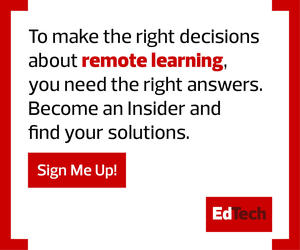EDTECH: What are the major differences between urban and suburban school districts, in your opinion?
SETHI: I started my career in educational technology at New York City Public Schools, a large urban school district. The NYC Department of Education is a proving ground for technology companies wanting to establish their products in education markets. Exposure to all of those leading-edge technologies back in the early stages of my K–12 career was a great formative experience and has continued to encourage me to think outside the conventional box when problem-solving.
Historically, city-based or urban school districts have always had to balance the needs of a diverse student population while also maintaining focus on closing educational gaps and meeting the educational needs of every student. The past two decades have seen suburban districts such as Fairfax County Public Schools grow to be more diverse, attracting families for their high-performing schools and proximity to Washington, D.C., while also welcoming increasing numbers of families who are new to the United States. This change in student demographics has effectively created large urban-suburban school districts, which now have to straddle the challenges of both.
EDTECH: What are your major ambitions or initiatives as you settle into your role at Fairfax?
SETHI: Advances in consumer technology are driving a lot of recent advances in workplace tech. How we consume technology in our day-to-day lives is starting to drive how we use technology in our professional lives. Future workplace technology must aim to be intuitive, seamless and low friction, and ultimately enhance our professional outcomes while providing enterprise-class security.
School districts need to start observing the consumer trends beyond the workplace demands to understand how students consume content at home. How do they learn? What tools and technologies do they use? How do they engage intuitively with online content? It is going to be critical to provide students with a set of tools in the classroom that are comparable to the ones they are already using, so students can effectively learn like they play. As technologists, this will require adjusting our mindset.
During the pandemic, we moved away from the standard notion of seat time. This was a major shift in how we delivered education without physical constraints.
CHECK IT OUT: Three teachers share their biggest challenges with hybrid learning.
EDTECH: Schools typically use the summer months to do IT upgrades and installations. Is that happening this year, or have plans been altered due to the pandemic?
SETHI: To maintain equitable access to virtual learning for all 189,000 students during the pandemic, Fairfax County Public Schools provided computers to all students. We purchased over 75,000 new computers to update our existing fleet. For students who did not have access to Wi-Fi at home, the school district supplied over 8,000 Mi-Fi hotspots and, more recently, purchased 34,000 additional pieces of equipment to allow teachers to teach concurrently to both virtual and in-person students, in support of our move back into the classroom.











